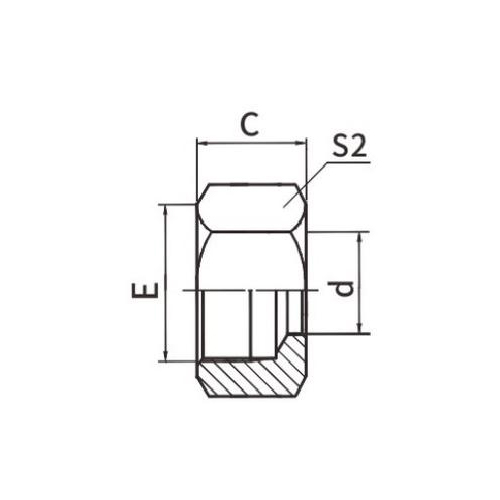A Closer Look at DIN Hydraulic Adapters: Precision and Performance in Fluid Systems
2025-04-18
In the world of hydraulic systems, efficiency, reliability, and precision are non-negotiable. These systems often operate under high pressure and in demanding environments, which means every component must meet strict standards. One essential part of these setups is the hydraulic adapter. Specifically, DIN hydraulic adapters have become a global standard for quality and performance. In this blog, we’ll explore what DIN hydraulic adapters are and why they matter in modern hydraulic applications.
What Is a DIN Hydraulic Adapter?
DIN stands for "Deutsches Institut für Normung," which is the German Institute for Standardization. A DIN hydraulic adapter is a connector or fitting designed according to DIN specifications, ensuring consistency and compatibility across hydraulic systems. These adapters are used to join different parts of a hydraulic circuit, enabling the secure and leak-free transmission of fluids between components.
Why Choose DIN Standard Adapters?
DIN hydraulic adapters are known for their high precision and strong performance under pressure. Because they follow strict engineering standards, they offer excellent reliability and uniformity. This makes them especially valuable in industries such as manufacturing, construction, agriculture, and heavy machinery, where dependable fluid connections are critical to system efficiency and safety.
These adapters are also designed to minimize leaks and pressure drops, which helps extend the lifespan of hydraulic equipment and reduces the need for frequent maintenance.
Materials and Durability
DIN hydraulic adapters are typically made from robust materials like carbon steel, stainless steel, or brass. Each material offers different benefits depending on the application. For example, stainless steel adapters are ideal for corrosive environments, while carbon steel versions are preferred for high-pressure applications. No matter the material, DIN adapters are built to resist wear, stress, and chemical exposure.
Versatility and Compatibility
One of the key advantages of DIN hydraulic adapters is their compatibility with a wide range of hydraulic hoses and tubing. They come in various thread types and sizes, making them adaptable to both metric and imperial systems. This makes them a go-to solution for engineers and technicians working with international equipment or retrofitting older systems.
Whether you're connecting pipes, hoses, or pumps, there’s likely a DIN adapter suited to your exact needs. Their universal design also helps reduce downtime and simplifies the replacement process.
Applications Across Industries
DIN hydraulic adapters are widely used across several industries. In the automotive sector, they ensure proper hydraulic fluid flow in power steering and braking systems. In industrial manufacturing, they are used in robotic arms, presses, and conveyors. Agricultural machinery also relies heavily on DIN adapters for reliable fluid transfer in tractors and harvesters.
From oil and gas to mining, these adapters play a key role in keeping machines running safely and efficiently.
Conclusion
DIN hydraulic adapters are more than just connectors. They are precision-engineered components that support the integrity and performance of complex hydraulic systems. By offering consistent quality, durable materials, and international compatibility, they have earned their place as a trusted solution in fluid transfer applications. For anyone working with hydraulic systems, choosing DIN-standard adapters is a step toward greater reliability and long-term success.



